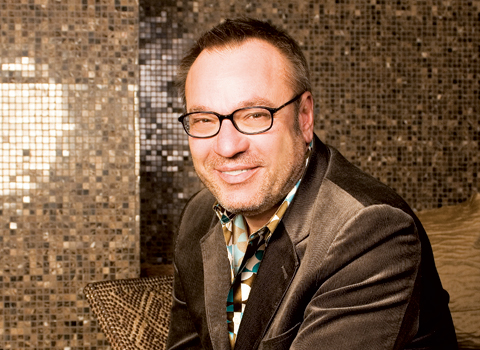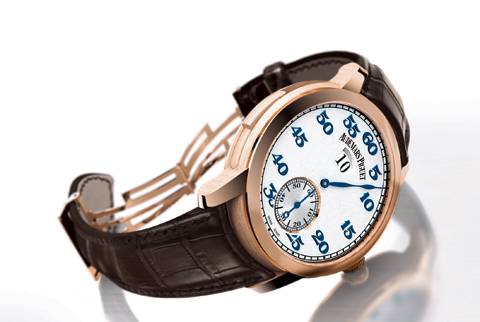
A bemused tour guide leading you through his brain. The steam rising from a soufflé. The squeeze of the last bit of icing from a pastry bag. A monk coming out of a 40-year vow of silence. A freckle-faced kid bouncing on a pogo stick. A freight train powered by a tornado, bringing truth from far away. The wind on the Marina Green on a clear, brisk day. Outstretched arms, hands, and fingers straining every tendon to touch some sky. The cool uncle who snuck you a beer at the family barbeque when you were 13. A smoky suede leather jacket forgotten in the closet. An exasperated raven with a tension headache. A precariously placed crystal goblet. Reading an algebraic equation after three shots of tequila. Fuzzy dice in an idling Rolls-Royce. The reflection of a bright red apple. A hummingbird in slow motion and fast-forward. At the same time. A valet brush whisking a tuxedo. Six gallons of boiled lavender water stirred with a feather. The switch from gravel road to paved and back again. And again. A silk trombone. A curious river about to meet the sea for the first time, realizing it’s met it some unexplained time before. Champagne lava.
t all emanates from some metaphysical connection Gatti has with color. He refers to himself as a colorist fleetingly, because he doesn’t have a title, nor does he like having one.
This is what Stanlee Gatti sounds like, the things I saw as I closed my eyes while listening to him. On the other hand, when San Francisco’s resident creative swami closes his eyes and listens to me, to you, to everyone, he gets flooded with color, one particular, defining color. “I don’t read fiction,” Gatti says. “If I want an adventure I close my eyes.” It’s his faculty x, the superpower that’s at the core of the secret, impossible-to-duplicate design formula that’s made him San Francisco’s most sought-after maestro of gatherings.
How sought after? He was asked to head the San Francisco Arts Commission by former Mayor Willie Brown, a post he held for 10 years. And check out a snippet of his signature social event commissions: the 1990 luncheon for Mikhail Gorbachev at the Fairmont; the 1997 Armani fashion show; the 25th Anniversary gala for Arista records in ’99; Matrix Fillmore in ’02; InStyle magazine’s Oscar Party with Elton John in ’03 and ’04; the interior design of Fleur de Lys in Vegas; the grand opening of the Lucas Arts Letterman Digital Arts Center; the Screen Actors Guild awards, plus the People magazine post-award party from ’04 to ’07; Charles Koch’s and Gordon Getty’s birthday parties, in ’05 and ’06, respectively; and the 40th Anniversary of ACT, SFMOMA’s Modern Ball, and the California College of the Arts, all in ’07. Gatti’s also been the go-to guru for a ton of significant projects for the San Francisco Opera, San Francisco Ballet, Asian Art Museum of San Francisco, de Young Museum, San Francisco Art Institute, the San Francisco Zoo, and for Diane Feinstein, Nancy Pelosi, Charles Schwab, Peter Magowan, and Dede Wilsey.
And then there are the weddings, the hundreds of weddings. Danielle Steele and Tom Perkins. Susie Russell and Mark Buell. Summer Tompkins and Brooks Walter. George P. Schultz and Charlotte Mailliard. Lara Hedberg and Christopher Deam. Christy Turlington and Ed Burns. These are heavy hitters with powerful, meticulous visions of their own. Yet on all of their big days they ceded virtually complete creative control to a guy from the small mining town of Raton, New Mexico.
It all emanates from some metaphysical connection Gatti has with color. He refers to himself as a colorist fleetingly, because he doesn’t have a title, nor does he like having one. “Event planner, floral arranger, party planner, installationist, designer: it generates a preconceived notion of who I am,” Gatti decries. “I’m more of a creative. I evolve. The creative aspect of designing a space and an ambiance is more sort of a mysticism, and one doesn’t always know where the visions come from.”
He knows where the visions started, however. It was during his first two weeks of school back in New Mexico. “I had recurring dreams. Not figurative dreams, but a form of energy dreams with flowing color. It was as though water was dropping on a windshield, which of course protects you, and there was also a little oil mixed in, creating a sort of prism reflecting a constant, always moving, vibrant color.”
Color thus became the beginning of his creative process. When someone speaks, he closes his eyes and visualizes, he sees the energy of that person through it. “You’re not emitting the electrons you would if there was an increased self-stimulation,” he theorizes. “It varies. It’s one of those things that change. I immediately latch onto a color, but it means something different all the time.” So when he has a client in front of him, at some early point in the discussion (he does this discreetly so they don’t even notice he’s doing it) he’ll close his eyes. “The initial color I usually see tends to be what is predominantly in their aura or in them as an energy field,” he states. “From that, I then intellectualize if it’s a color I’m going to design. Form is second, then line. The spatial aspect is not as crucial, unlike other designers who start large and get small. I start from the molecule and increase it into the atom, and then go bigger. Usually I’m 99 percent right.”
The other one percent? Listen to this. Fourteen years ago a couple came to him to plan their wedding. They’d never met him but had heard about his wizardry. During that initial meeting, they went over some details, such as some things they wanted, when the event was taking place, but the rest they left up to Gatti.
Gatti never takes notes; he never writes anything down. If he’s really listening, it just goes right in, sort of a like a barrel that holds the information and begins to turn with all the ingredients. “If it turns long enough,” he explains, “it’s like what happens if you have 10 different kinds of wet wool inside a dryer. When you pull it out you have this ball that when stretched it’s all together like a new painting.”
So cut to a week before the wedding. The bride to be came to see the space. After looking it all over she said that she really, really loved it. “She loved that the whole dance floor was painted and that there were oranges going around it,” Gatti recounts. “And she loved the thousands of orange tulips. And even the tablecloths with the slight orange. ‘But the funny thing,’ she said, ‘is that you forgot that we told you that you can do absolutely anything you want, just don’t do it in orange. We hate orange.'”
Aside from being completely mortified, he wanted to laugh in the absurdity of the tragedy. “I looked at her dumbfounded and said oh my god, ultimately I want you to be happy so I don’t care what it takes, I’ll change it,” Gatti recalls. “She said, ‘No, don’t. I really love it, the way it’s incorporated from solid to weak.’ It was a little while later that she contacted me and told me that they had done their house in all the natural tones with orange accents. So does that prove that I’m great at forecasting? Was my intuition really strong at that time? Was I trying to teach them something? I don’t know. But I’m always certain that if I please myself then I will undoubtedly please the client, which is paramount. I was saved by their forgiveness, their understanding, and their penchant for orange that they didn’t even know they had.”
He’s been telling me this from an undisclosed fortress of solitude in the beautiful northern mountains of New Mexico, where he’s simultaneously decompressing from another year packed with projects and recharging for the next. His next huge extravaganza is January 5 for philanthropist Ted Rosenberg’s 100th birthday celebration on the stage of the San Francisco Opera house (a very rare happening). Gatti’s also working on a picture book of past work, finishing a book about his philosophy of money, and completing a musical piece for percussion and voice titled Dreamer Isolated, which is comprised of eight polyphonic songs based on the Native American medicine wheel. In his spare time he’s craft working, i.e. making useful things out of mostly recycled materials. He asks me, “Are you having fun?” He doesn’t know that my eyes are closed again and the floodgates are open.




















